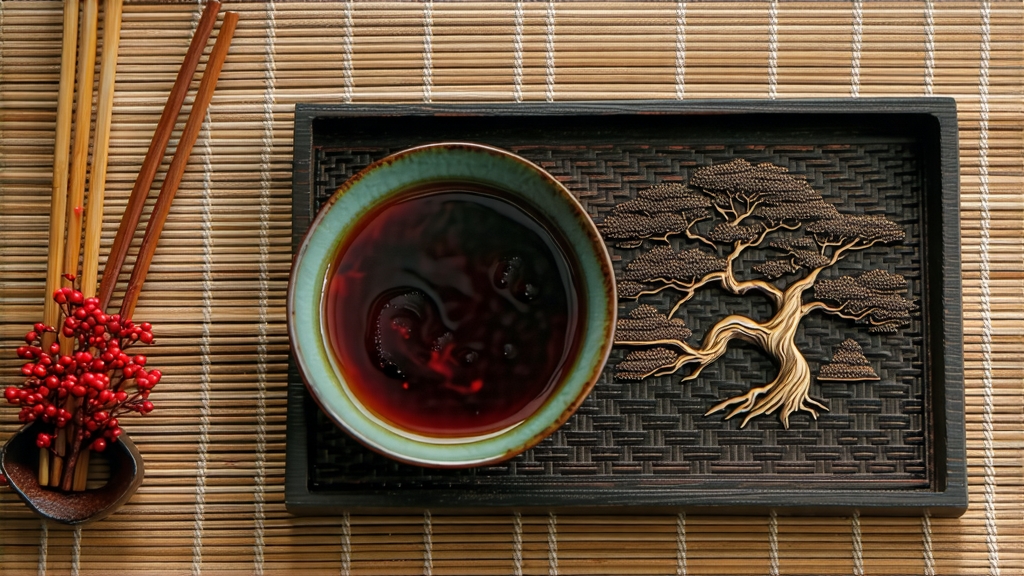
Tucked into the fog-crowned slopes of Phoenix Mountain in northern Guangdong, Phoenix Dancong (Fenghuang Dancong) is the perfumed prodigy of Chinese oolong. Unlike the rolled pellets of Anxi Tieguanyin or the dark strips of Wuyi Yancha, Dancong leaves are long, twisted, and slightly curved, resembling the tail feathers of the mythical phoenix—hence the name. Yet its visual elegance is only the prelude; the real enchantment lies in a cup that can mimic peach, almond, ginger flower, or wild honey with uncanny fidelity.
Historical records trace Dancong back to the Southern Song dynasty (1127-1279), when imperial refugees fleeing the Jurchen invasion settled among the She ethnic villages. Locals offered wild tea leaves that delighted the courtiers; by the Ming, tribute quotas were formalized. The Qing saw the emergence of “single grove” craftsmanship: villagers discovered that individual old trees expressed unique aromatics, so they began to harvest, wither, and fire each tree’s yield separately, giving birth to the concept of “single-tree tea” (danshu cha).
Today the Phoenix Mountains shelter over seven thousand ancient trees aged 100–800 years, scattered between 350 m and 1,200 m elevation. The granite soil is laced with quartz and humus, while diurnal temperature swings of 10 °C coax slow leaf growth and intense fragrance precursors. Locals classify Dancong by aroma type (xiang xing), cataloguing more than eighty profiles; the ten “famous fragrances” include Honey Orchid (Mi Lan Xiang), Yellow Gardenia (Huang Zhi Xiang), Almond (Xing Ren Xiang), and Ginger Flower (Jiang Hua Xiang). Each name is not marketing whimsy but a sensory target achieved through meticulous husbandry and firing.
Crafting Dancong is a ten-step choreography spread across thirty-six hours. Picking starts at dawn when two leaves and a bud still hold overnight dew; only the She women’s nimble fingers can meet the “horse-ear” standard—leaves symmetrically poised like miniature saddles. The first solar withering under mountain sun lasts twenty minutes, followed by shade withering on bamboo racks where leaf temperature drops and grassy notes dissipate. The critical “water walking” (zou shui) phase begins after sunset: trays are stacked, and every thirty minutes the tea is gently shaken, bruising edges so oxidative enzymes meet air; the process repeats five to seven times until leaves turn jade at the center and crimson at the rim.
Oxidation is arrested at 30–40 %—the sweet spot that preserves floral volatiles while developing maltol and geraniol. A unique 130 °C “green killing” (sha qing) in a cast-iron wok lasts only three minutes; masters judge readiness by the crackle of leaf veins and the sudden rush of linalool. Immediately afterward leaves are wrapped in linen and rolled under foot-powered boards, twisting them into the signature strip shape. The most iconic step is charcoal firing in squat clay kilns. Using 20-year-old lychee wood, artisans maintain 80 °C for eight hours, rest the tea for seven days, then repeat; top grades endure three cycles, during which sugars caramelize and smoky phenols integrate, yielding the lingering “mountain honey” aftertaste prized by connoisseurs.
To brew Phoenix Dancong gongfu style, choose a 120 ml gaiwan or pear-shaped pot. Pre-heat with 95 °C water, then fill one-third capacity with dry leaf—Dancong is voluminous, so five grams usually suffice. The first 5-second rinse awakens dormant aromatics; discard it but hover over the rising steam to catch the first “dry fragrance.” Subsequent steeps progress 8, 12, 15, 20, 30 seconds, always using water just off a rolling boil. A hallmark of quality is the “tea tear”: when the lid is lifted, amber droplets cling like resin, releasing a burst of orchid and ripe peach. Pour liquor into aroma cups, invert, and unfurl; the lingering “cup scent” can last an hour, evolving from citrus zest to warm vanilla.
Flavor evaluation follows three latitudes: front aroma (gan xiang), mid-palate body (tang gan), and rear throat rhyme (hou yun). Premium Mi Lan Xiang opens with a bright honey top note, slides into a custard-like mid palate